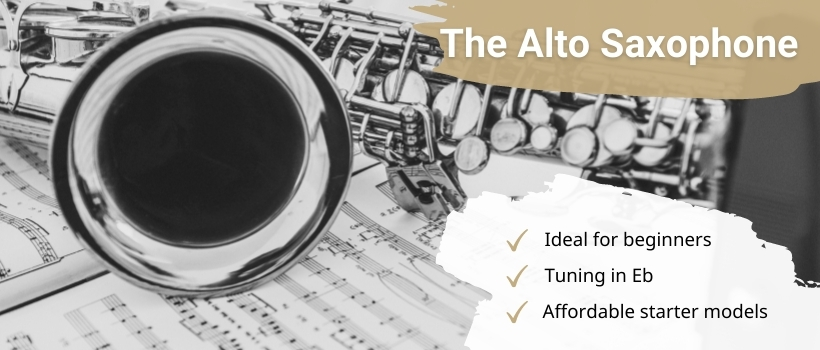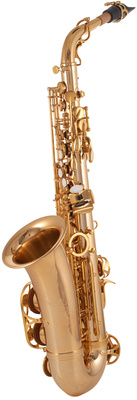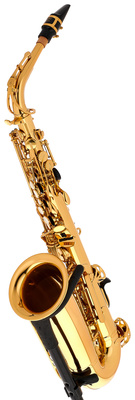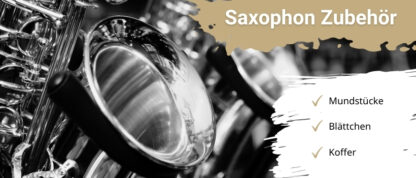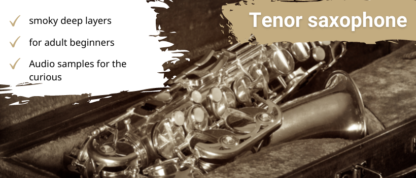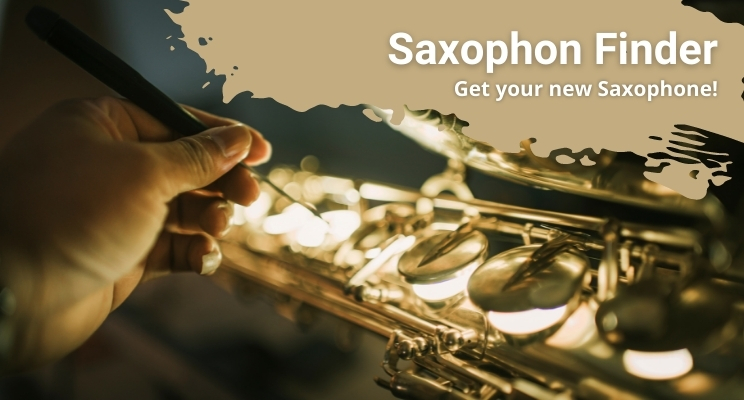The alto saxophone is one of many types of saxophone. It is very popular with beginners and is used mainly in the big band or in jazz – but the alto saxophone is also often interpreted in a modern way in pop music and used mainly for melodic parts. The saxophone was originally created by Adolphe Sax for use in classical music. However, it has not become established there to this day.
What is an alto saxophone?
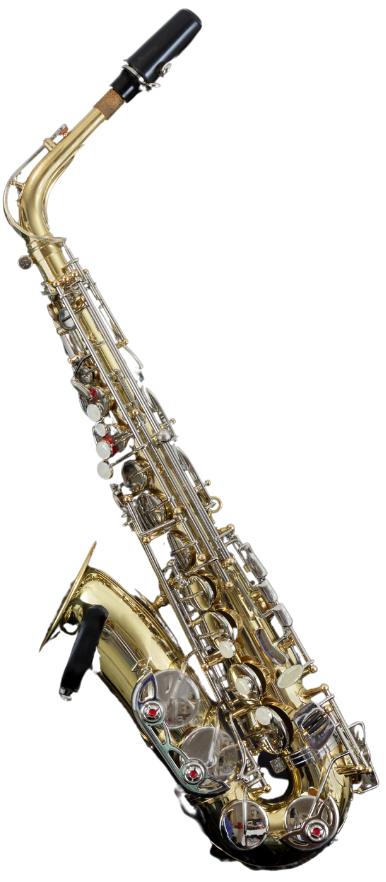
The alto saxophone is one available size of saxophones. It belongs to the high sounding saxophones. In general, the saxophone belongs to the transposing instruments. This means that the sound of the instrument does not correspond to the notation. The alto saxophone is tuned to Eb, so a notated C sounds as Eb. Since the alto saxophone is relatively small, it is very suitable for beginners and is also easy for children to play. It is also a very beginner-friendly model in terms of lung volume and embouchure.
One of the characteristics of the alto saxophone is the neck. It connects the mouthpiece with the body. This is bent at about a 90° angle. This distinguishes it clearly from the tenor saxophone, for example, which has a clear S-shape in the neck.
For whom is the alto saxophone suitable?
The alto saxophone is a popular model for beginners not only because of its handy size. It is also easier to get started technically: less force is needed to produce a tone, so the lung volume does not have to be too pronounced yet. The embouchure technique is less demanding than with other saxophone models. There are also special versions for children – they are adapted to smaller hands.
How does the alto saxophone sound?
Basically, the alto saxophone belongs to the higher-sounding saxophones. It is tuned to Eb, i.e. it sounds a sixth (nine semitones) higher than the written note. The range corresponds to that of a low female voice. Within the sizes, it sounds second highest. If you prefer a very high sound, you should look for a soprano saxophone. The baritone saxophone, on the other hand, sounds particularly low.
What equipment is available for the alto saxophone?
If you are just starting to play the saxophone, you do not have to worry much about suitable equipment. The parts supplied with the saxophone are usually perfectly adequate for beginners. If you still want to individualize your saxophone a little, you can concentrate on a suitable mouthpiece and reed.
A mouthpiece for your alto saxophone
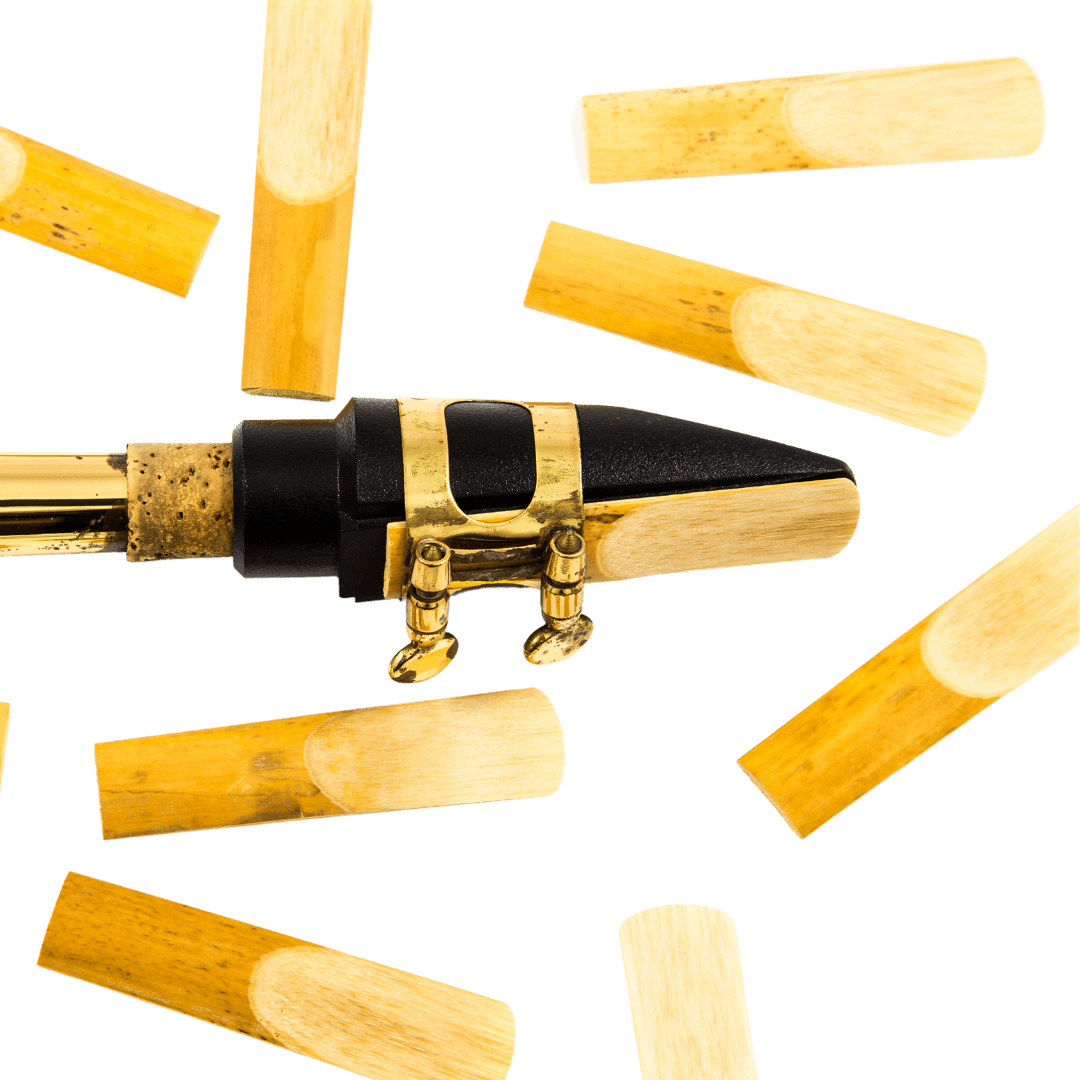
The mouthpiece does not guarantee a certain sound, but always sounds different depending on the player. Many players therefore use a variety of different mouthpieces, as they all lead to different sounds in combination with their playing style. When looking for the perfect mouthpiece for you, you should try out a lot and see which sound you like best.
The various mouthpieces differed mainly in terms of the orifice, i.e. the distance from the reed to the tip of the mouthpiece, and the orifice length, i.e. the angle of the orifice. The mouthpieces also differ in material: For example, they are made of wood, rubber, plastic, glass or metal. Whether the material has an effect on the sound of the alto saxophone is, however, disputed.
The reed for the alto saxophone
The reeds for the saxophone need to be replaced regularly. Over time, they become soft or tear, making them unusable. You can choose between reeds made of wood or plastic. There are also hybrid reeds. These are made of wood but have a plastic coating. This is to increase their durability.
Furthermore, the leaves differ in their thickness (strength/flexibility). They are measured in thicknesses from “1” to “5”, with “5” indicating the thicker reeds. The stronger the reed, the more power you need to produce a sound. Beginners should therefore start with the less strong reeds and slowly work their way up. The thickness should also be adapted to the mouthpiece. The following applies: The larger the mouthpiece’s orifice, the thinner the reed.
Cleaning the saxophone
Saxophones must be cleaned regularly so that the condensation from the breathing air does not attack the material and thus impair the sound in the long term. After each practice session, the instrument should therefore be dried from the inside. The mouthpiece, reed and corks also need to be well cared for to ensure a long life. With a good cleaning set, you are usually well equipped for all these tasks. In it you will find:
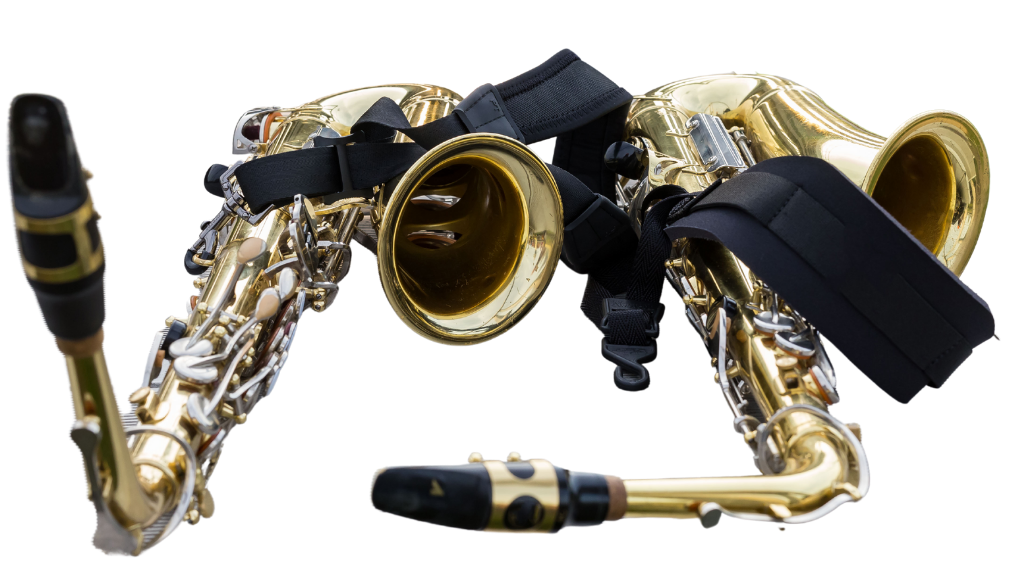
- Soft cloths for drying the interior
- Polishing cloths for the outer surfaces
- Cork grease
- a mouthpiece brush
- clay hole cleaner
Also available are wipers that are stored in the saxophone after cleaning and absorb any remaining liquid there. This not only provides better protection against moisture, but also additional protection for the neck.
Who produces alto saxophones?
There are various saxophone manufacturers on the market. The best known are certainly Yamaha and Thomann. They produce many models in the mid-price sector. The models from Startone offer a smaller investment. The manufacturer belongs to Thomann and is located in the low-price sector. However, this does not mean a loss of quality! Startone instruments come with a three-year guarantee.
Professionals mainly look around at international manufacturers. Here, for example, there is the instrument house P. Mauriat or the Italian manufacturer Rampone & Cazzani. Keilwerth supplies high-quality saxophones from Germany.
Which alto saxophone should I buy?
There are many different alto saxophones to buy. Which one is right for you depends on you and your preferences. We have selected a few models that are suitable for beginners:
The beginner’s model
This model is absolutely beginner-friendly. It is not only very inexpensive, but also comes with a mouthpiece and case, so you can start right away. Technically, it is a good introduction to the world of saxophones. Visually, it impresses with its lacquered brass.
A good investment
This model is definitely one of the higher-priced models. However, it is money well spent – for beginners as well as for advanced players. The body and keys are made of brass, the entire model has a gold lacquer finish. The mouthpiece and case are also included. This saxophone is characterized above all by its balanced and even tone character over the entire range.
For advanced users: the Yamaha YAS 280
At almost 900£*, this model is certainly no longer one of the entry-level models. If you decide to buy this model, you should already have experience playing the saxophone and know what you need in a saxophone. The body is made of brass and is lacquered with gold lacquer, as are the mechanics. The saxophone comes with a case and mouthpiece, as well as a saxophone belt and cork grease for maintenance.
FAQ: The Alto Saxophone
As a rule, the alto saxophone is tuned to E-flat. This means that when the saxophonist plays a C, the actual note produced is an E-flat.
The alto saxophone has a relatively high pitch. It is tuned in E, which means that it sounds a sixth higher than the note played. The range is between des and as2 (a2).
You can get a good saxophone for as little as 250£*. If you are more experienced and want an alto saxophone that suits your needs, it can cost between 500£* and 2000£*.
An alto saxophone is tuned to E flat, which is a fairly high pitch.





